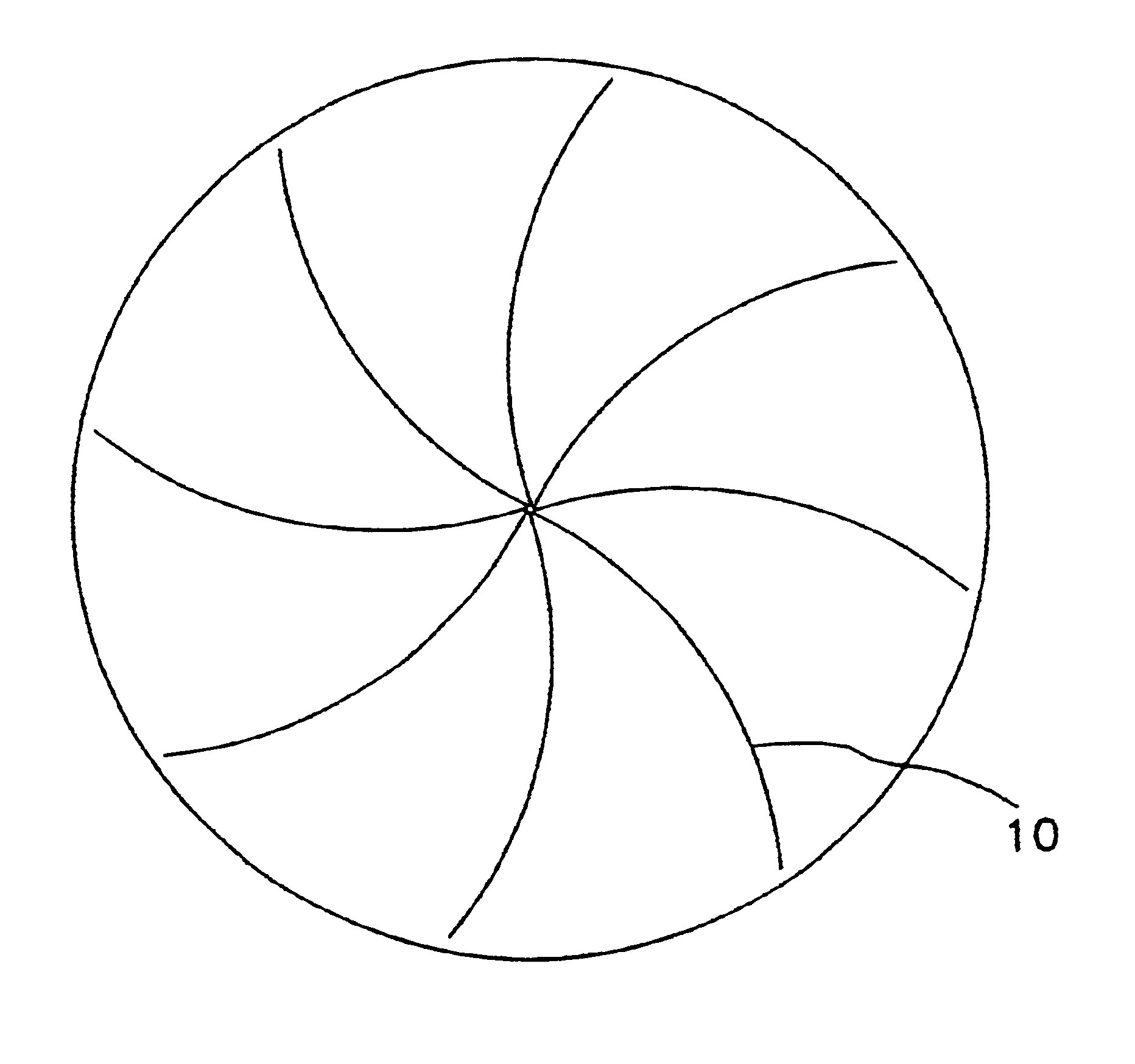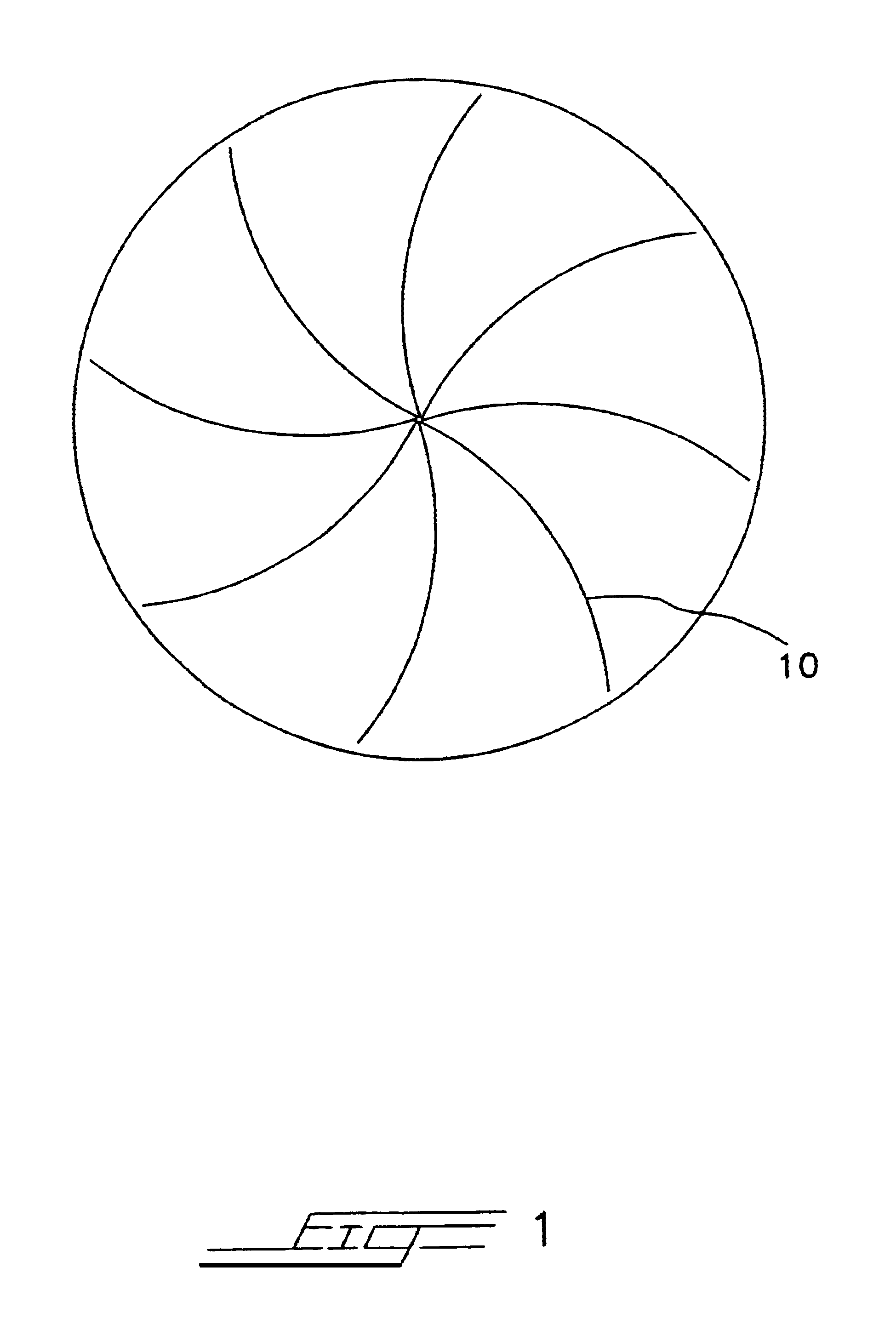Polishing pad for use in chemical-mechanical planarization of semiconductor wafers and method of making same
- Summary
- Abstract
- Description
- Claims
- Application Information
AI Technical Summary
Benefits of technology
Problems solved by technology
Method used
Image
Examples
first example
[0039]The base paper for this embodiment consists of 75% cotton linters, grade 225HSR from Buckeye at a contamination level of 0.25 parts per million; 10% “TENCEL” lyocell fiber; 10% Hycar acrylonitrile latex and 5% colloidal silica, grade 1140; a 15 nanometer particle, from Ondeo Nalco. The cotton and lyocell fibers are dispersed in water using pulper action. Latex is added and then precipitated onto the fibers using a low molecular weight cationic retention aid (Alcofix 159). The colloidal silica is then added, followed by additional Alcofix 159 for particle retention. The pH is then lowered to about 4 or 5 with sulfuric acid (H2SO4) to further retain the colloidal silica in the sheet. Once fully blended, the slurry is dumped to the stock chest where more water is added to obtain the ideal slurry solids for the papermaking operation. The pH is again adjusted to retain the colloidal in the sheet while being formed. The slurry is then pumped to the head box of an inclined wire or Fo...
second example
[0041]Same as the first example, except that the colloidal is added only to the paper slurry, and not added to the resin, resulting in a polishing pad with 4-10% colloidal content.
third example
[0042]Same as the first example, except that the colloidal is not added to the paper slurry, but only to the resin, with raw paper consisting of 90% HSR cotton linter fibers plus 10% latex saturating in colloidal resin, which results in a 10-15% colloidal in the pad.
PUM
| Property | Measurement | Unit |
|---|---|---|
| Fraction | aaaaa | aaaaa |
| Fraction | aaaaa | aaaaa |
| Fraction | aaaaa | aaaaa |
Abstract
Description
Claims
Application Information
 Login to View More
Login to View More - R&D
- Intellectual Property
- Life Sciences
- Materials
- Tech Scout
- Unparalleled Data Quality
- Higher Quality Content
- 60% Fewer Hallucinations
Browse by: Latest US Patents, China's latest patents, Technical Efficacy Thesaurus, Application Domain, Technology Topic, Popular Technical Reports.
© 2025 PatSnap. All rights reserved.Legal|Privacy policy|Modern Slavery Act Transparency Statement|Sitemap|About US| Contact US: help@patsnap.com


